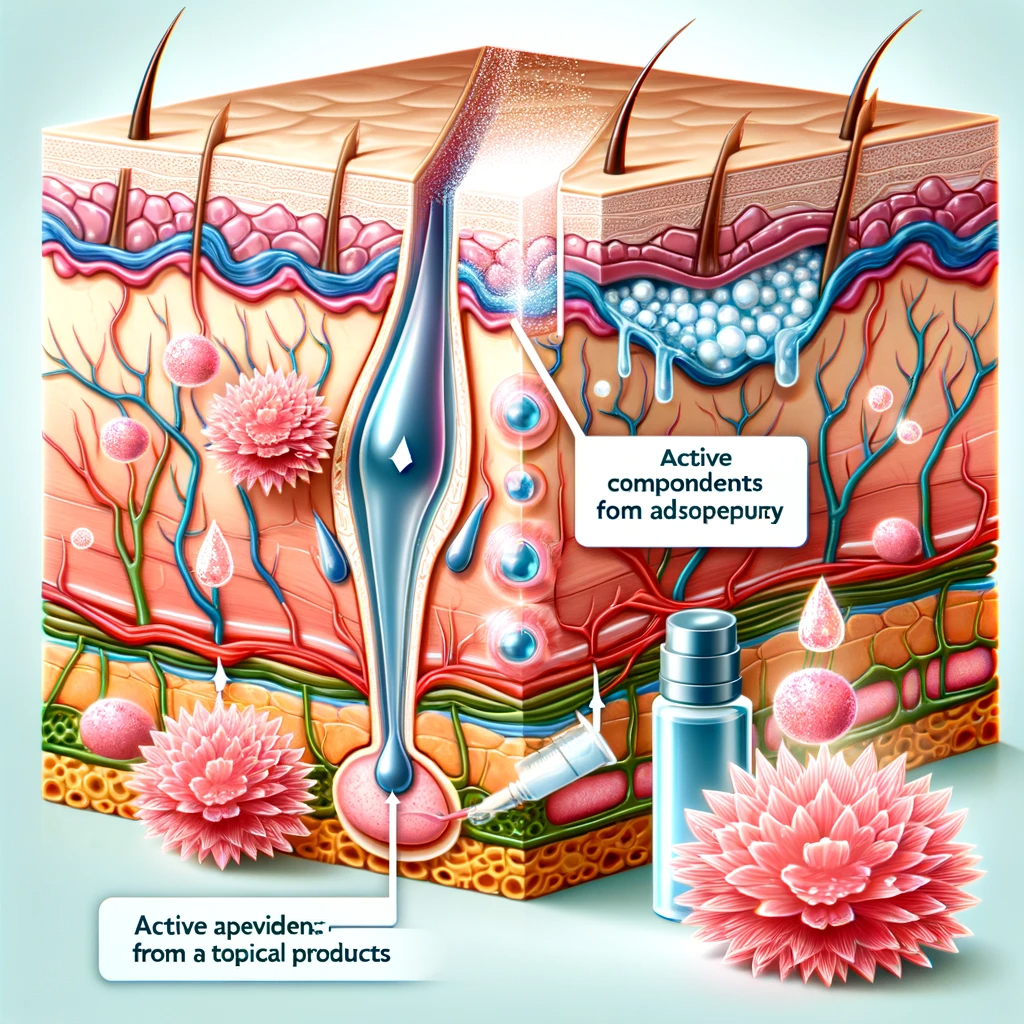Introduction to Topical Remedies for Pain Management
Have you ever been stopped in your tracks by sudden pain—a headache, muscle soreness, or joint ache—that sends you scrambling for relief? While over-the-counter pain relievers offer a temporary fix, they often come with undesirable side effects and potential health risks. This is where the magic of topical remedies comes into play. Applied directly to the skin, these treatments offer targeted relief without the systemic effects of oral medications. As someone who has journeyed from skepticism to trust in holistic pain management, I want to share the transformative benefits of topical remedies with you.

Understanding Topical PainHolistic Approach: Understanding the Mechanism of Topical Pain Relief Remedies
How Topical Pain Remedies Work:
Topical herbal remedies penetrate the skin through their active compounds, which can include essential oils and herbal extracts. These compounds are absorbed through the skin’s outer layer and then travel deeper to the affected area. As they reach the target, they interact with receptors and nerve endings, providing localized relief. This process is gentle and non-invasive, making it a comfortable and natural way to address pain and discomfort. Users often report a soothing sensation as the herbal remedy begins to work, providing relief where it’s needed most.
Benefits of Topical Remedies
- Targeted Relief: Direct application means focused pain relief.
- Reduced Side Effects: Fewer systemic effects compared to oral medications.
- Ease of Use: Simple, convenient application for home use.
- Diverse Options: A wide range catering to various pain types.
- Complementary Treatment: Works alongside other pain management methods.
Unlocking Natural Pain Relief: Embracing Topical Remedies
My journey to herbal remedies didn’t happen overnight. It started about a year or two before I discovered these natural solutions when I experienced a sudden back spasm that sent me to the ER. It was a wake-up call because I had been on pain medications that not only made me constantly drowsy but also mentally incapacitated. Since embracing herbal remedies, I’ve effectively and safely managed similar pain episodes, avoiding the need for frantic visits to the ER. This shift in my approach to pain management has been a game-changer, allowing me to regain control over my well-being.
My Go-to Pain Remedies for Everyday Aches:
For daily discomforts like headaches or muscle pain, my solution is Coleherbals’ A.M. and P.M. Pain Balms and Creams.
Their formulation with natural ingredients offers relief without harsh side effects, and I’ve found them particularly helpful for a range of issues.
- Natural Ingredients: The formulations are crafted with natural ingredients, reducing the risk of harsh side effects often associated with synthetic pain relievers. This makes them a safer option for regular use.
- Targeted Relief: The A.M. and P.M. variants are designed to cater to the body’s varying needs at different times of the day. The A.M. balm may provide invigorating relief to start your day, while the P.M. cream can help in relaxing and soothing your body before bedtime.
- Versatility: These balms and creams are effective for a range of issues, not just limited to headaches or muscle pain. This versatility makes them a go-to solution for various types of discomfort.
- Ease of Use: The application of these balms and creams is straightforward and can be easily incorporated into your daily routine.
By choosing Coleherbals’ A.M. and P.M. Pain Balms and Creams, you are opting for a holistic approach to pain management that harmonizes with your body’s natural rhythms.

Debunking Myths About Topical Remedies
Myth 1: Not as Effective as Oral Medication: Contrary to this belief, topical remedies offer concentrated, localized relief, making them highly effective for many types of pain, especially when it comes to muscular and joint discomfort.
Myth 2: Only for Mild Pain: While great for minor aches, many topical treatments are also potent enough for more intense pain, especially those with higher concentrations of active ingredients.
Myth 3: High Risk of Skin Irritation: While skin sensitivity varies, most herbal topical remedies are formulated with natural ingredients that are generally gentle on the skin.

Choosing the Right Topical Remedies
Selecting the Best Product: Look for products with a clear list of ingredients and their concentrations. Consider the type of pain you’re experiencing—muscular, joint, or skin-related—and choose a product formulated for that specific issue.
Coleherbals’ Pain Products: Coleherbals offers a range of products, like their A.M. and P.M. Pain Balms and Creams, each designed for specific types of pain. Their transparency in ingredient listing and focus on natural, effective formulations make them a reliable choice.
Diversifying Your Pain Management Approach: Exploring Complementary Options
While topical remedies offer effective natural relief, they are just one piece of the pain management puzzle. To create a holistic and personalized plan, it’s essential to consider a range of strategies. In addition to topical treatments, several alternatives can enhance your pain management toolkit:
- Over-the-counter options: These readily available medications, like acetaminophen and ibuprofen, can provide quick relief for mild to moderate pain. Always use them responsibly.
- Prescription solutions: For severe or chronic pain, stronger medications may be necessary, but they should be used under close medical supervision.
- Physical therapy: This therapeutic approach addresses the root causes of pain, promoting long-term relief.
- Mind-body techniques: Practices like yoga and meditation can help manage stress and improve well-being.
- Lifestyle adjustments: Prioritizing self-care through sleep, diet, and exercise can significantly impact pain levels.
Crafting Your Personalized Pain Management Plan
Crafting an effective pain relief plan involves a comprehensive approach, integrating various strategies tailored to your unique needs. Start by pinpointing the root cause of your discomfort. It’s crucial to understand whether your pain stems from chronic conditions, acute injuries, or stress-related factors. Consulting with healthcare professionals, such as pain management specialists or physical therapists, can provide valuable insights and guidance.
Incorporating non-invasive pain relief methods should be a priority. These might include physical therapy exercises, occupational therapy techniques, or engaging in low-impact activities like yoga and swimming. Such practices not only aid in pain alleviation but also enhance mobility and overall physical health.
Lifestyle adjustments play a significant role in managing pain effectively. Simple yet impactful changes, such as adopting an anti-inflammatory diet, ensuring quality sleep, and implementing stress-reduction practices like mindfulness or meditation, can have profound effects on pain levels.

Embracing a holistic approach is key. This means not just addressing the physical aspects of pain but also considering its emotional and psychological impacts. Holistic pain management might involve complementary therapies like acupuncture, massage therapy, or chiropractic care, which have been shown to help in reducing pain and improving life quality.
Consistency and patience are essential components of your pain management journey. It’s important to give various strategies time to work and to stay committed to your personalized plan. By doing so, you embark on a path towards not just pain relief but overall well-being and improved quality of life.
Practical Applications of Topical Remedies
Effective Application Tips: Clean and dry the affected area before application. Apply a small amount and gently massage it into the skin for better absorption. Don’t apply to broken skin or open wounds. For products like Cole Herbals’ balms and creams, a little often goes a long way, so start with a smaller amount and increase if needed.
Safety and Precautions when using Topical Remedies
Conducting a Patch Test: Prior to fully integrating any new topical remedy into your routine, it’s crucial to conduct a patch test. This simple step can help ensure that your skin doesn’t react negatively to the product.
Familiarize Yourself with the Ingredients: Knowledge is power, especially when it comes to what you apply to your body. Take the time to learn about the ingredients in your topical remedies to avoid any known allergens or irritants.
Follow Application Guidelines: To achieve the best results and avoid any complications, always use the product as directed. Proper adherence to application guidelines is not just recommended, it’s essential for your safety.
Unlocking Natural Pain Relief Solutions
Topical herbal remedies offer a world of natural, effective pain relief. My own journey from a painful incident to discovering Cole Herbals exemplifies the benefits and transformative potential of these products.
I encourage you to explore coleherbals.com and discover how their products can fit into your pain management routine, offering a safer, more natural path to wellness.

